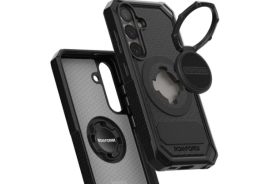Every year end, IBM Research releases its "Next 5 in 5" list, which is a compilation of five technology predictions for gadgets in the coming five years. This year, the "Next 5 in 5" list from IBM focuses on the five senses and new technology surrounding each sense, pointing to incredible possibilities for futuristic smartphones.
"This year, we focused the IBM Next 5 in 5, our 2012 forecast of inventions that will change your world in the next five years, on how computers will mimic the senses," noted Bernard Meyerson, Chief Innovation Officer, IBM.
While some of IBM's predictions in the past have bordered on the bizarre, some predictions like the 2006 one for realtime speech translation are very much a working reality. With technology becoming an indispensable part of our day-to-day lives, the constant innovations and changes often lean towards the fantastical and inconceivable. These changes transform our perception of our surroundings and more often than not, simplify tasks.
"A host of technologies are coming that will help us overcome our limitations and will transform the way we interact with machines and with each other. One of the most intriguing aspects of this shift is our ability to give machines some of the capabilities of the right side of the human brain. New technologies make it possible for machines to mimic and augment the senses," noted Meyerson.
IBM's five-senses based futuristic technologies are as follows:
Touch
Thanks to haptic and infrared technologies, which will enable a smartphone's display and vibration capabilities that in turns stimulates a physical sensation, individuals will be "able to reach out and touch through your phone."
"Within the next five years, your mobile device will let you touch what you're shopping for online. It will distinguish fabrics, textures, and weaves so that you can feel a sweater, jacket, or upholstery - right through the screen," notes IBM Research.
Sight
Current technology has at its disposal recognition systems that can pinpoint a specific face in the crowd. However, with "a pixel will be worth a thousand words" as its motto, IBM forecasts that future computer vision will have the capability to analyze data patterns and comprehend visuals in the context of macro data.
"In five years, computers will be able to sense, understand, and act upon these large volumes of visual information to help us make better decisions and gain insights into a world they couldn't previously decipher," says John Smith, IBM's Senior Manager.
Hearing
IBM forecasts that in the next five years, sensors will be able to pick up on frequency changes and sound patterns that could possibly predict the deeper meaning behind a baby's cry via an app through your smartphone! This could well be a reality thanks to "algorithms embedded in cognitive systems that will understand any sound."
Taste
Imagine if future tablets had the ability to taste via "digital tastebuds" to help users eat healthier and smarter. IBM predicts that this may well be a reality in the next five years. The tablets would use an "algorithmic recipe of favorite flavors and optimal nutrition" to calculate a user's "perfect" meal, that satisfies both the dietary requirements of the individual without compromising on palate preferences.
Smell
IBM Research forecasts that mobile devices will soon have a sense of smell, which will enable them to identify different odors.
"Within the next five years, your mobile device will likely be able to tell you you're getting a cold before your very first sneeze," says Dr. Hendrik F. Hamann, IBM's research manager, physical analytics. "With every breath, you expel millions of different molecules. Some of these molecules are biomarkers, which can carry a plethora of data about your physical state at any given moment. By capturing the information they carry, technology can pick up clues about your health and provide valuable diagnostic information to your physician."
Which technology appeals to you the most out of the five? Do you think any of these will become a reality in the near future or will be relegated to being just fantastical predictions?
Check out the video below.
© Copyright 2025 Mobile & Apps, All rights reserved. Do not reproduce without permission.












